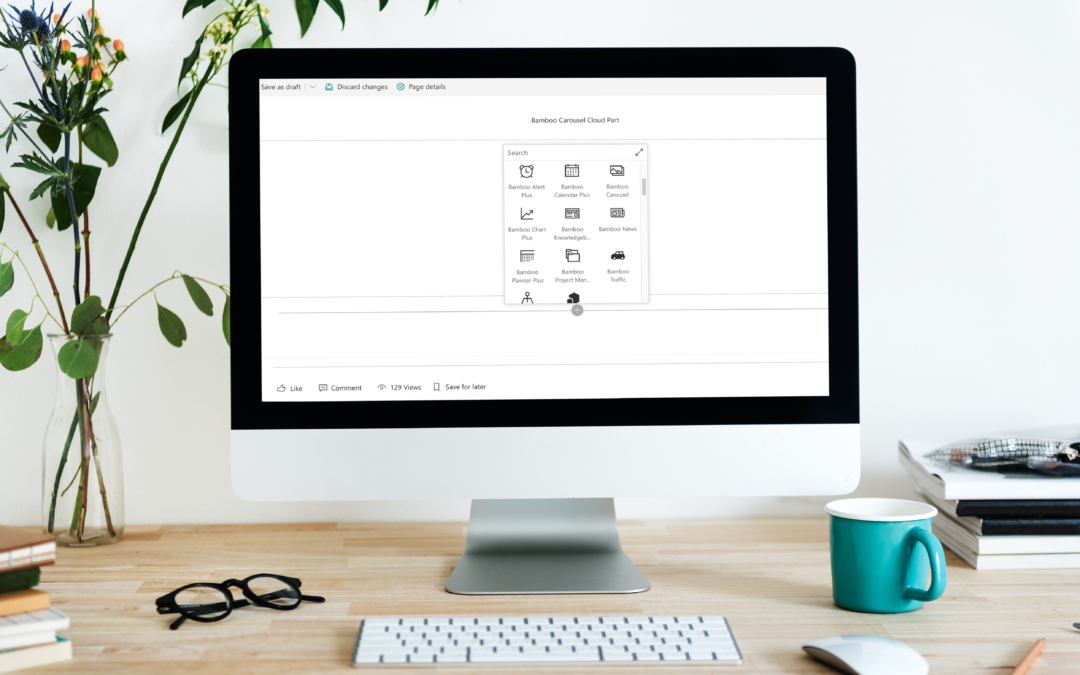Product Deployment In the Modern and Classic SharePoint Era
At Bamboo, we’ve been working hard to ensure our products work with the Modern Experience. As you’re probably aware, the modern experience has been underway since May of 2016 I believe. It was a slow trickle of new interfaces that started slowly and brought us into the new breath of design that SharePoint has been needing to add to their application. Microsoft describes the modern experience in SharePoint as being designed to be compelling, flexible, and more performant. Making it easy for anyone to make new beautiful, dynamic sites and pages that are mobile-ready in easy development steps.
As of April 2019, Microsoft established that it will no longer be possible to restrict an entire organization (tenant) to classic mode for lists and libraries. After April 1, lists and libraries that are in classic mode as a result of tenant opt-out will automatically be shifted to modern, they said.
So anyways…All that said because it’s been a considerable effort to ensure that we at Bamboo Solutions were prepared for this development. Meaning that our products had to work on both Classic and Modern pages. In an effort to accommodate the masses of our customers that still use Classic pages and the onslaught of recent migrations to modern SharePoint online, our current documentation and product deployment process had to change.
This blog is about how we handle the deployment of your products currently. By the time you read this, which could be ten minutes from me posting it, this process may very well have changed. Ha! Love us some tech don’t we?! Let’s break down this discussion into the two types of deployment scenarios I’ve mentioned above. We have the classic deployment strategy and the modern deployment strategy.
Classic Deployment
Our classic deployment strategy for deploying our new JavaScript-based solutions to your Site Collections uses a homegrown solution for aiding our customers in the installation, configuration, and troubleshooting of the installation experience. Our process for this is well documented in our support guide: Installing/Updating Cloud Part. We walk you through adding a text file to a page that includes an uploader. By uploading our solution.zip file into the file browser on that page, you can deploy your Cloud Part to the Site Collections of your choosing and view the logs of the installation.
Classic deployment of our product solutions can be scoped for deployment at the Site Collection level. These web parts can be added to both Wiki or Cloud Part Pages.
Modern Deployment
“Modern-Ready” versions of Bamboo Solutions Cloud Parts are included in the package for our Cloud Part product. You’ll find a file in your package with the file type “.sppkg” that can be uploaded into the App Catalog.
Microsoft has provided the App Catalog as a deployment mechanism for these solutions which are based on the SharePoint Framework (SPFx). By utilizing the App Catalog at the Site Collection level you can ensure that the scope for which you’re deploying the current solution is at that Site Collection level. The deployment process to the app catalog is documented in our guide: Installing a Cloud Part for use with SharePoint’s Modern Pages.
The process is simple for deploying SPFx solutions. You drag and drop your “.sppkg” file to the App Catalog and activate the solution. Then, on your modern page, you add a web part and the web part will be an option to select in the list of web parts.
SharePoint’s Modern Experience is very exciting. We’re seeing the product design side of SharePoint coming into a modern and current environment that really does start to attack the age-old customer request, “Can you make it look not like SharePoint”. The intensity with which Microsoft is releasing updates and features for SharePoint Online and Office 365 is impressive. The strategies and approaches we recommend on a daily basis are heavily impacted by yesterday’s releases and tomorrow’s announcements from the Office dev team. Regardless, it’s good to be working on SharePoint using modern and some open-source tools.
As for strategies for the deployment of products, let us know if we can help you with any product or deployment questions or technical support you might need. We’re here to help you and your product management!

